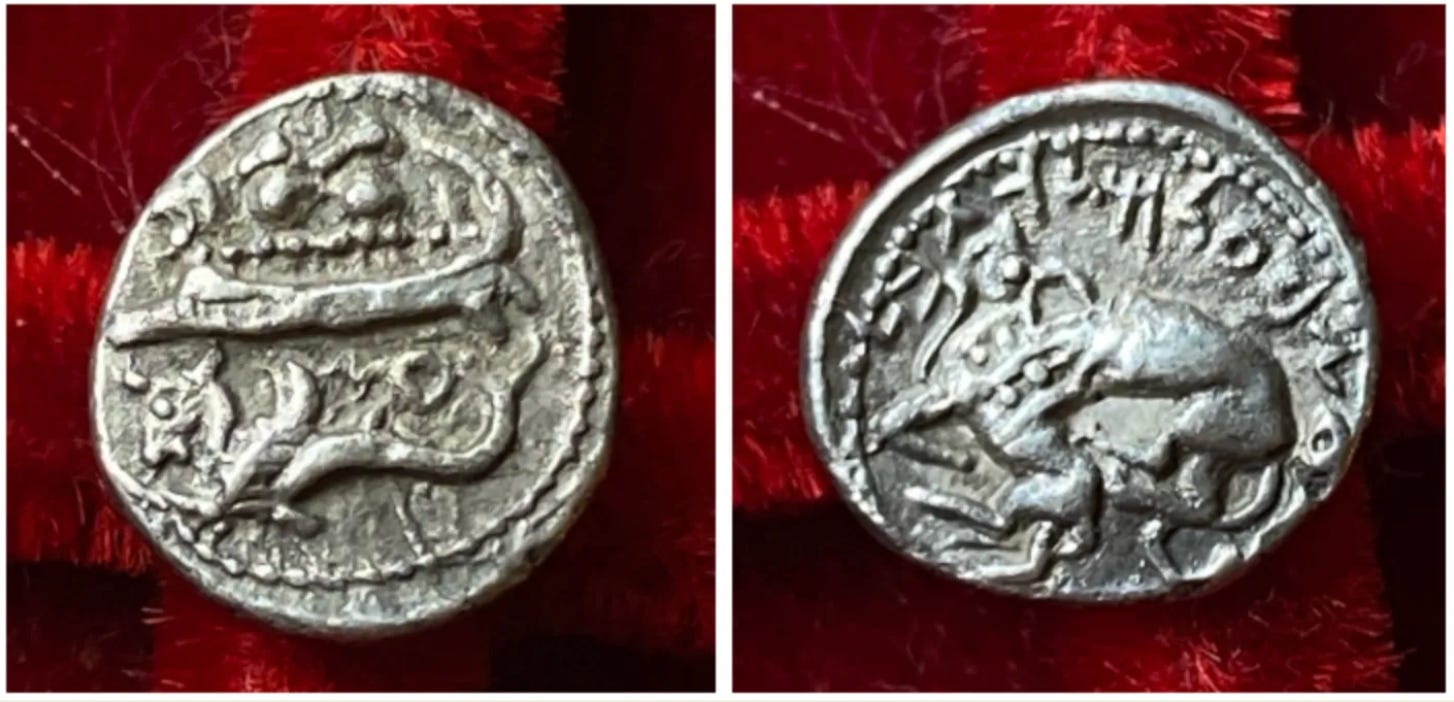Since my last post was popular, I thought I’d share another interesting coin that I bought recently. A little different this time, though: instead of a large provincial bronze, a tiny silver fraction that caught my eye at London Coin Fair for its impressive detail and interesting depictions:
Persian Empire, Gebal-Byblos, Phoenicia, Ozba'al, c. 400 - 376 B.C. Silver 1/16 shekel, Elayi-Elayi B IV.2.2; Betlyon 15; BMC Phoenicia p. 95, 6 - 7; HGC 10 134 (S), SNG Cop -, 0.68g, Byblos (Jbail, Lebanon) mint, galley left with lion head prow ornament, two hoplites on-board, hippocamp left below, Phoenician monogram above tail; reverse Phoenician legend counterclockwise: Ozba'al, King of Gebal, lion left bringing down a bull left
The Phoenicians, an especially ancient civilisation from the Levant, are likely most well known nowadays for their trade/seafaring skills and invention of the first alphabet (vowel-less), from which the Greek alphabet is derived. This coin was issued late in Phoenicia’s history, under Persian rule and just before the conquest of Alexander the Great.
At just 0.68g, it’s impressive how much detail of the larger denominations this fractional example retains. The obverse features a distinctive Phoenician galley, decorated with a prow that looks like a head of a lion, carrying two tiny hoplites (note their circular shields and helmets). Below, under the waves, lies a hippocamp - the mythical flying fish-horse. The composition works well, in my opinion: it’s both heavily nautically-themed and well-suited to the coin’s circular surface. And the reverse is equally fascinating: it depicts a lion fighting a bull, a motif popular in coinage and earlier Eastern art. The letters above/around tell us who issued the coin: ‘Ozba'al, King of Gebal’ (Gebal being the city of Byblos in modern-day Lebanon, where it was produced). The seller’s description of this coin mentioned a different king - ‘‘Aynel’ - being referred to, but I don’t think this is right: if anyone knows any Phoenician, please let me know!
I’ve enjoyed looking at this coin more than anticipated since I bought it, drawn to its small size. In person, fractional coins like these are so much more appealing than photos suggest, magnified under scrutiny they don’t deserve. The skill of die engravers in crafting such a miniature work of art is worthy of merit, too! And for those of us who can’t afford the large chunks of silver, they present an excellent opportunity to own the same designs, for less.
If you have any, what’s your favourite tiny ancient coin in your collection?



That's fascinating! Could you give an approximate idea of its size? I see it's not circular, but a rough "about 20mm at widest (or whatever) would be good" (Love your blog, even if I keep quiet about it!)
Byblos area is also known as jbeil now so I guess so.